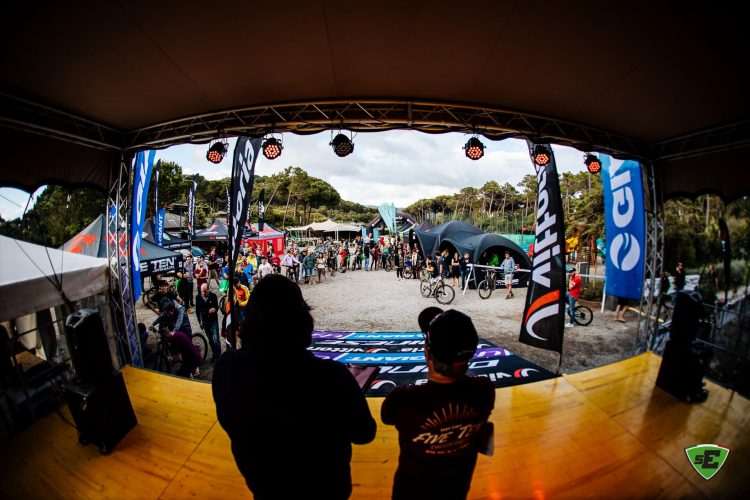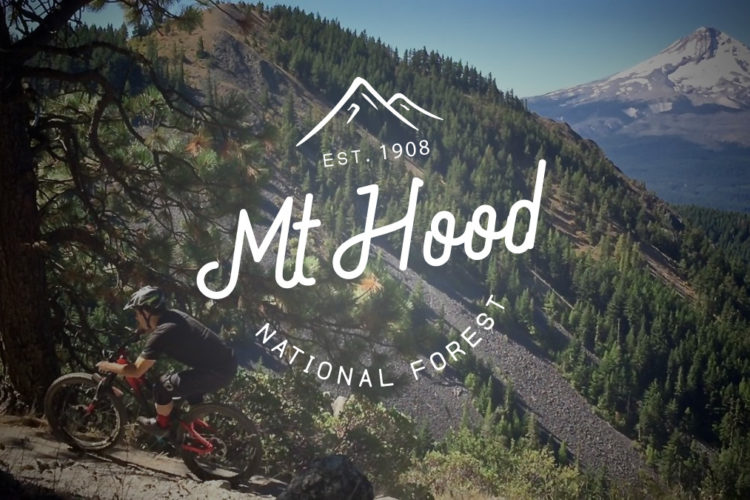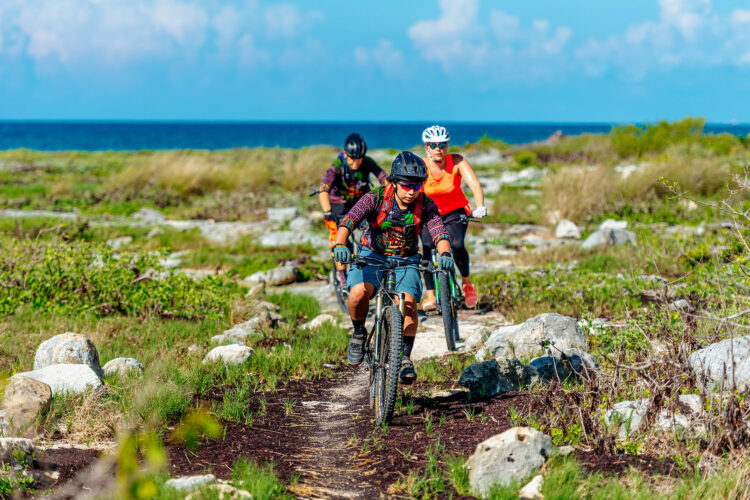
You may know of Adam Craig from the day he represented the USA at the 2008 Beijing Summer Olympics, or one of the times he won an XC or Super-D national championship as a junior and elite racer.
During his wide-ranging professional cycling career, Adam also carved out time for other adventurous pursuits, like racing rally cars with his Giant teammate Carl Decker, skiing his brains out through the winter months, and giving back to his local community of Bend Oregon, by working on and advocating for the city’s massive trail system.
The last several years of Adam’s career on the Giant Factory Offroad Team were all about enduro, and he loved the thrill of riding uncharted tracks on the edge of too-fast. His taste for “on-sight racing” and riding new trails in unknown places led him to a retirement dedicated to promoting a similar type of riding and racing.
Today Adam is the lead representative for the Enduro World Series’ latest addition titled the North American Continental Enduro Series. We recently got the chance to ask him a few questions about working with the EWS, and the other dirt-focused projects he is involved in.

Singletracks You have been doing heaps of trail work and race promotion since retiring from the pro race circuit. When did you know that this was the direction you wanted to go with your retirement?
Adam Riding new trails in new places is what I always enjoyed the most about racing. Now that I’ve got a bit of time on my hands, it’s great to focus that appreciation on the resource that inspires us. Moving into trail stewardship has always been my intent, from my teenage years in Maine, scratching ghetto trails into whatever hillside we could find. There’s such good momentum around trail advocacy these days, and I’m glad to have an opportunity to be a part of it. The timing feels right, especially here at home in Oregon.
Singletracks How were you selected to represent the North American Continental Enduro Series?
Adam EWS founder Chris Ball and I went on a ski touring trip in Greenland two springs ago, and at the end of this glorious journey I mentioned that if there was any EWS work that my skill set could assist, I’d love the opportunity to help. When the Continental Series was proposed, Chris reached out and I said yes immediately.

Singletracks What is the aim of adding the Continental Series to the EWS calendar?
Adam As the Enduro World Series Proper continues to travel to exotic locations and define the bleeding edge of the discipline, the organizers acknowledge that it’s important to have a feeder system of similarly inspiring events that are more accessible for up-and-coming riders and amateurs. The Conti series is here to help bridge the gap. Ultimately, it would be great if it became the de-facto series, like the NORBA events of the 90s.
Singletracks In addition to approving locations for events, what does your job with the EWS entail?
Adam I’m not quite at the “approving locations for events” level yet. That’s still handled by the mothership. However, Chris, Kate, and I have a good rapport and we’ve certainly had some constructive chats about which locations have the most potential. There’s a lot more to it than just awesome trails. But you better have that, to start.
My actual job with the EWS is to attend the North American series events and help ensure a certain level [of quality]. This means working with the race director and their crew to make sure everyone has the best event experience possible. Much like the experiences I cherish from my EWS racing days.
A big part of this is consistency across a three-round series that has three different promoters, each prominent in their respective regions. They’re all great events, and it’s always great to have another person on hand to provide perspective and nag about some details. Like course marking. Oh, and, social media.
I’m in charge of Instagram Stories for the events. Since I’m old, Richie Rude had to teach me how to post a story. Turns out it’s like telling a story. We can do that.

Singletracks How do you select locations for pro-level enduro races? What are some elements you look for in a location and promotion team in order to add it to the list?
Adam Again, I’m learning about all this, but have certainly noticed some themes amongst the EWS hosts. Terrain is the easy part; 300m Carrick Mountain in Ireland showed us that. [There are] such great tracks there, inch-perfect, built by a discerning crew of locals. It takes an engaged community partnering with an established, respected organizer to realize the full potential of a world level enduro event. This can take on a lot of forms, but it’s ultimately rooted in passion.
Singletracks Were there any concerns about California’s growing wildfire season affecting the race in Northstar August 25th-26th? Do you have backup locations in case of fire?
Adam Not that I’m aware of. To be honest, any sporting event in the American West is subject to this concern. Most of the time we get lucky. When we don’t, well, a canceled event is the least of the worries.

Singletracks Having raced events around the world, what would you say is unique about enduro events or racing styles in the US?
Adam Enduro in the US is largely subject to our conservation-minded public land management. Which is a good thing for our culture. But it sure is sweet ripping through the alpine meadows of your dreams in the French Alps.
The flip side is that I really enjoy the different challenge that is putting together a perfect run on a trail that you know someone is faster than you on. That person lives there and might work at the bike shop. What are they doing to make this trail so perfect? Can you figure it out with one practice run? Maybe…
What we do have in the US is a whole bunch of awesome bike parks. Bike park racing is a lot of fun. We also have some great backcountry races. Crested Butte was always a favorite of mine. The beauty of Enduro is its diversity, our riding in America is incredibly diverse.

Singletracks Who are some of the top women’s and men’s contenders for the North American Continental Series in 2019?
Adam Oh man, considering Richie Rude swept the North American Series and Sam Hill just won the Asia-Pacific opening round, we might be in for more domination by our heroes. But, since that’s not actually the point, here are a few folks I’d like to see surprise Richie:
- Pete Ostroski won the final stage of the series on his home ski hill of Burke, Vermont. Boy can ride, and is part of a surge of talent out of the Northeast. Watch this space.
- Evan Geankopolis traveled the full series and loved the variety. This is important.
- McKay Vezina and Shawn Neer are at EWS top-20 pace and can certainly win these races.
- Rebecca Beaumont comes from XC but has Quebec skills to back it up.
- Amy Morrison took the series this year, and she even enjoyed the challenge out east.
- Maybe we’ll see Anneke Beerten at a round. That BMX style is hard to miss.

Singletracks Enduro is young and changing as it gains popularity. What do you see for the future of the genre? Will we continue to see steeper and more technical race tracks?
Adam Despite much hand-wringing by DH pros who had to pedal in the early days, there has always only been one place to win an enduro race: the turns. The rest of it isn’t relevant.
So, sure, the courses are raw and steep and you have to be able to ride, but it’s really all about cornering speed. Sam Hill. Any more questions?
The test of a racer’s fitness always has been and always will be comprehensive. Course walking, practice, race day. Managing your life throughout. These are the hardest mountain bike races. So, however that manifests itself, well, it’s different at every round. That’s the beauty of it.
Ultimately, riding any trail as fast as you can is gnarly, regardless of the terrain. Visually assaulting [trail] is often quite simple to ride. That squeak between two trees, high speed, tight on the inside, straightening out the next section, that’s the one that will bite you.
This is a cop-out, but I’d like to see it go exactly where it’s going. Around the world, at the most inspiring locations. Grassroots to World Series level. What a time to be riding mountain bikes!
Singletracks Word has it that the UCI is locking arms with EWS. How do you think this will affect the genre and the races?
Adam As I understand it, there will be almost no effect on the races. The EWS organization is tiny. There are four employees. They run a category-defining World Series on a modest budget. They need support, mostly with clerical stuff.
[Having] the UCI behind the scenes gives Chris and his crew some bandwidth back. Oh, and they’re really good at making sure things are fair. This is important. Further, an agreement has been negotiated that pares down the UCI’s responsibilities and leaves control of everything up to the EWS team. It’s not going to become the World Cup. But it will be great to see someone in the World Champion’s jersey next year! $5 on Sam Hill. “The turns are there for a reason.”
Ultimately, riding any trail as fast as you can is gnarly, regardless of the terrain. Visually assaulting [trail] is often quite simple to ride. That squeak between two trees, high speed, tight on the inside, straightening out the next section, that’s the one that will bite you. -A.C.

Trails: Advocacy and addition
In addition to his role with the EWS Continental Series, Adam works with a number of prominent trail advocacy groups in the “Cascadia” region of the US. When he’s not busy managing the race series he can be found building and brushing trail or helping to run the picturesque Trans Cascadia backcountry enduro stage-race. I think Adam would agree that he actually had more free time for interviews and the like while training as a professional athlete. These days, he keeps himself fully “pinned.”
Singletracks In your work with the Trans Cascadia enduro race you all have opened up and reclaimed a lot of lost tracks across the PNW. Are there plans to continue moving the race to new locations, and opening more trails?
Adam The Blind Enduro format relies on fresh terrain. That said, people are usually OK with something they might remember from last year. We certainly will continue moving the race around the Cascadia region, which is quite vast and littered with forgotten trails that all seem to ride like they were built for mountain biking. I love it. And we’ve got a lot more in store. So far we haven’t actually built much trail, but we will.
As Trans-Cascadia continues to grow and move, our intent is to continue cultivating our relationship with land managers, specifically the US Forest Service, to use the event as a vehicle for ongoing trail stewardship. It’s an honor uncovering these forgotten gems and sharing them with people, but it’s even better to have a lasting stewardship legacy through our partners, ensuring mountain biking stays awesome.

The reality is, Trans Cascadia shows up, clears historic trails, which have a historic use, and ultimately introduces a whole new user group. Should MTB’ers actually choose to chase our tail to the middle of nowhere, Cascadia? By the looks of it, folks are motivated and interested in riding proper backcountry trails. It’s great to see. But, it comes with responsibility.
[see_also id=’246963′]
The same nice group of middle-aged women has been hiking your favorite new epic singletrack every Fourth of July for years and years. Climbing over down trees, navigating through brush, and happy to do so. They appreciate the trail work, but now they are starting to be changes in the aesthetic of the trail, it’s not 100% duff.
An aside: Also, we’re using soil types wrong. Loam is the gold stuff you build berms out of. Duff is the dark stuff on top, the litter, the rotting plant matter. The stuff your bro just sprayed in your face. It’s duff. There, I said it. Team Robot made me do it. And, you know what, it’s the duff cycle that keeps our trails riding so well. All that canopy litter from a winter of storms essentially re-surfaces these backcountry trails for us annually. -AC
Fortunately, mountain bikers are hard workers and genuinely good stewards. We have an opportunity to prove this as these recently reclaimed riding experiences mature. You know what I’m talking about. Water. Erosion. Mountain bikers ruining trails. Which we really don’t. Water does. And we sometimes make subtle paths for water, which it takes full advantage of.
We do have the ability to do subtle amounts of work, or, in some cases, major amounts of work, to mitigate the (intense in these parts) hydrological cycle. That means cleaning and building drains. Thinking like water. It’s a never-ending process. The responsibility of which will fall largely on volunteer shoulders.
So, if you love the backcountry experience, come to a volunteer event and help us manage it (we’ll teach you) so we can keep loving it’s purest form. Plus, maybe we’ll do a little line optimization for fun in the process. Wink. Trans Cascadia is partnering with the Forest Service to facilitate all of this as we travel around the region, with you.

Singletracks What other trail-work or race promotion gigs are you currently involved with?
Adam I’m staying busy in retirement.
- Oregon Timber Trail Association board member.
- Trans Cascadia (501c.3) board member.
- Oregon Mountain Bike Coalition founding steering committee member. (This is going to be awesome, a statewide coalition of Oregon’s existing clubs with a united voice. Connected by connecting the geographic and access need dots between each area, usually via singletrack.)
Singletracks What is one of your favorite trails (or longer routes) to ride?
Adam How about the opposite of that? My favorite rides these days are around the neighborhood, scrappy fenceline trails, city parks, local kids’ vacant lot jumps, trials sections, whatever it might be, for an hour at a time. Then, back to the next thing.
Adam’s retirement plan strays a bit from the basic program of bettering a golf game and finally learning to play the banjo. His dedication to giving back to the communities, the sport, and the forests that he loves is inspiring.
All of the above endeavors are supported by Giant Bicycles and the Giant Factory Off-Road Team’s suite of sponsors: Shimano, DVO Suspension, Maxxis, HT Components, 100%, MRP, ODI, and Smith Optics. Adam says thanks to each of them for their continued commitment.
Thanks for all of your hard work AC!




















